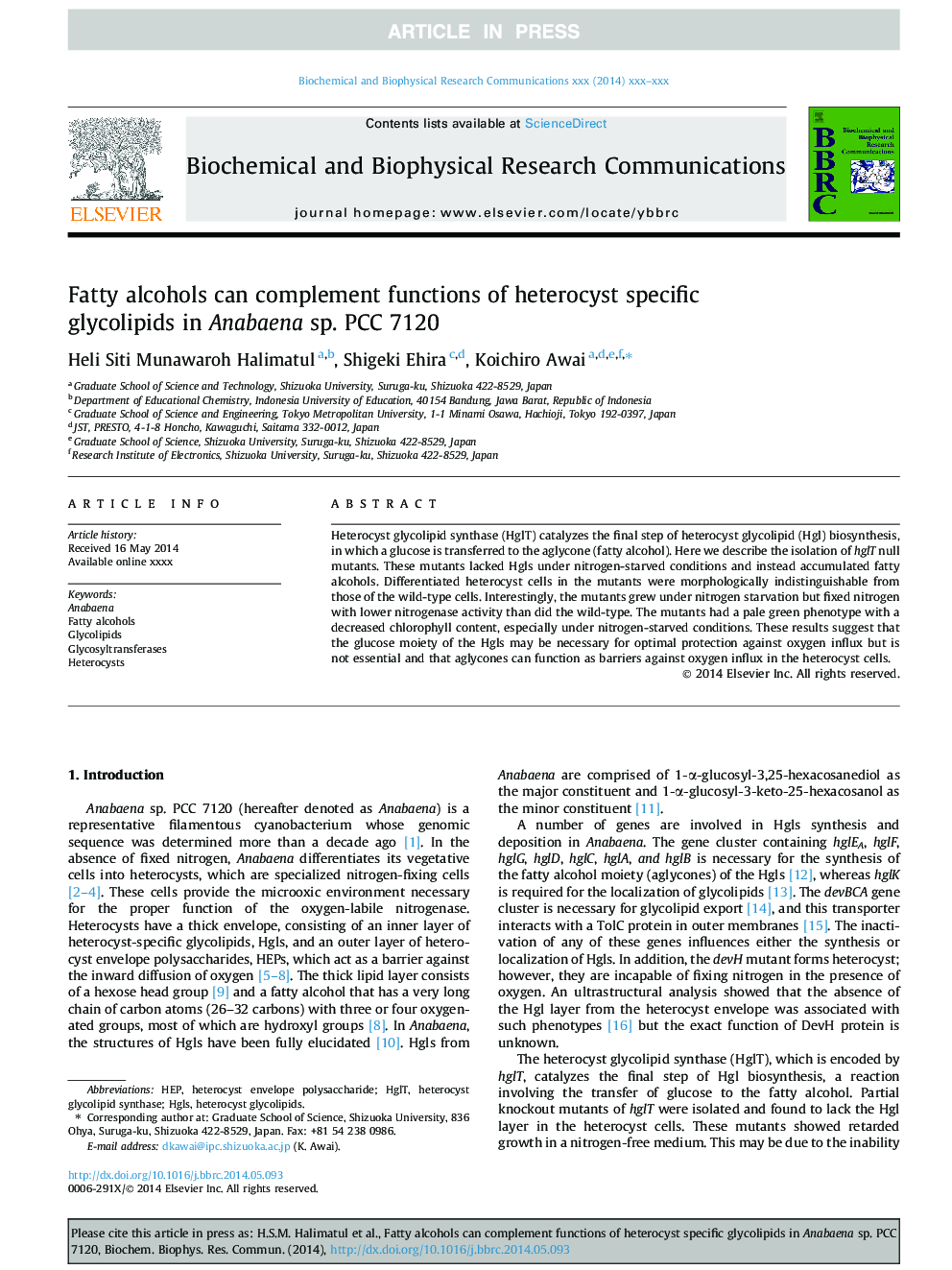| Article ID | Journal | Published Year | Pages | File Type |
|---|---|---|---|---|
| 10754759 | Biochemical and Biophysical Research Communications | 2014 | 6 Pages |
Abstract
Heterocyst glycolipid synthase (HglT) catalyzes the final step of heterocyst glycolipid (Hgl) biosynthesis, in which a glucose is transferred to the aglycone (fatty alcohol). Here we describe the isolation of hglT null mutants. These mutants lacked Hgls under nitrogen-starved conditions and instead accumulated fatty alcohols. Differentiated heterocyst cells in the mutants were morphologically indistinguishable from those of the wild-type cells. Interestingly, the mutants grew under nitrogen starvation but fixed nitrogen with lower nitrogenase activity than did the wild-type. The mutants had a pale green phenotype with a decreased chlorophyll content, especially under nitrogen-starved conditions. These results suggest that the glucose moiety of the Hgls may be necessary for optimal protection against oxygen influx but is not essential and that aglycones can function as barriers against oxygen influx in the heterocyst cells.
Related Topics
Life Sciences
Biochemistry, Genetics and Molecular Biology
Biochemistry
Authors
Heli Siti Munawaroh Halimatul, Shigeki Ehira, Koichiro Awai,
